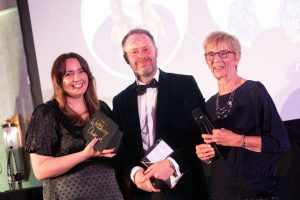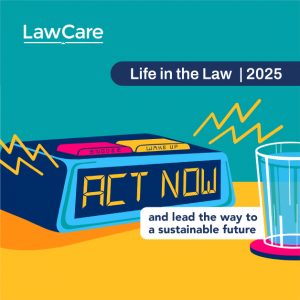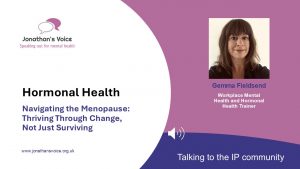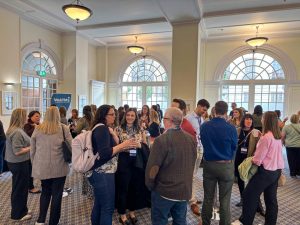On 7 September 2022 Jonathan’s Voice and IP Inclusive collaborated to hold a webinar – “Darkness to hope” – to mark World Suicide Prevention Day, with the theme this year being “Creating Hope Through Action”.
This blog post, written by Helen Smith (IP Inclusive Executive Support), highlights the key points that were discussed. You can access a recording of the main presentations here, and the speakers’ slides and other follow-up resources via IP Inclusive’s website event post here.
The blog was first posted on the IP Inclusive website. We are grateful to Helen for this very clear summary and to IP Inclusive for their permission to reproduce it here.
The webinar included a pre-recorded video by Tiago Zortea (clinical psychologist in training at the University of Oxford) in which he shared his professional experience of understanding suicide, as well as discussing how to create spaces of hope, using a library as a metaphor for the brain
This was followed by a conversation with Andrew Reeves (Professor in Counselling Professions and Mental Health and a BACP Senior Registered Counsellor/Psychotherapist) and Mark Fudge (a counsellor within higher education for 20 years). They talked about suicide and how we might all support others by creating a culture where it’s OK to talk about mental health and where it’s OK to admit to not being OK. The webinar was brought to a close by Val McCartney and Penelope Aspinall (both of Jonathan’s Voice) with a look at what the word “hope” means to different people and how various organisations approach building hope amongst the people they work with.
Helen writes:
THE LIBRARY OF LIFE: UNDERSTANDING SUICIDAL EXPERIENCES
Tiago’s presentation was based around the fascinating metaphor of “the library of life”:
Imagine our brains as libraries with each of our memories, thoughts and interpretations about the world and about ourselves represented by books. Every experience in life results in a book and these become our reference points.
Tiago explained how, due to an evolutionary survival function, we have a tendency to focus on the same old books again and again, and often these have negative contents. This cognitive bias towards remembering negative experiences over positive ones is experienced by most of us, but research suggests that people suffering from suicidal thoughts or experiences are more likely to recall negative memories and also to interpret current life experiences from the perspective of those memories.
This focus on negative experiences of the past (depression), together with the fear of experiencing negative events in the future (anxiety), can leave us feeling hopeless and trapped, and hinder our ability to live in the present (here and now).
People who live through such a lens of negative experiences for a prolonged period of time are more likely to feel suicidal. Using the metaphor, these may be people who have a library where the majority of books may include negative content, thus limiting life experiences, narrowing interpretations, reducing creativity, and reducing the capacity to regulate emotions and solve problems – all of which can lead one to question whether it is worth being alive.
CREATING SPACES OF HOPE
So, how can the library be expanded to create hope? Research indicates that “expanding the library of life” with new books can assist in suicide prevention. This means creating spaces that allow the development of flexible thinking, emotional connections, a sense of belonging, non-judgemental conversations, valuing diversity, developing more effective ways of regulating emotions and solving problems, as well as learning how to live in the present.
Tiago reminded us that it is important to remember that nobody is responsible for keeping someone else alive – we can’t remove someone’s library of negative experiences. But we can help to create new positive experiences – new books of joy, new stories, perspectives and interpretations. Andrew and Mark picked up on these strategies in their discussion.
THE STIGMA OF MENTAL HEALTH AND THE VALUE OF TALKING
Andrew began by noting a paradox between how widely mental health is now talked about in the media and online, yet how difficult it still is to talk about our own mental health face to face. These are really difficult conversations, and so it’s important to think about how we can create a workplace or a culture where it’s OK to say how we’re really feeling, and where it’s OK to struggle sometimes or not be OK. A culture where mental health is treated in the same way as physical health, where it can be talked about without stigma.
The biggest myth around suicide is that asking about suicide could put the thought in someone’s mind or endanger them somehow. In fact evidence supports the opposite – that if you ask about suicide calmly and non-judgementally then you’re likely to reduce the risk of it happening. Yet finding ways of asking about it and engaging with it can be incredibly challenging. The whole terrain around suicide is complicated and painful, and there are no quick easy solutions, so people may have a tendency to avoid it.
Yet, returning to the library metaphor, Mark explained how such “censoring” of books in this way – by silencing people – is not helpful. To the contrary, allowing a book to be seen and read – allowing the person to talk – can be the most valuable thing that can happen. For someone feeling trapped, the experience of having someone hear and sit with their really uncomfortable feelings can make them feel understood and maybe alleviate some of the entrapment and bring hope. This could be a way of writing a new book or could bring a new understanding or interpretation of an old book.
It was acknowledged that people often have concerns about asking difficult questions for fear of discomfort (their own or the others’) or causing offence. Andrew noted that it is possible to have such conversations if the culture and context and space is right. These conversations are not comfortable or easy but they are potentially life-saving. At a very basic human level, asking a colleague if they’re alright, or expressing your concern, could open up the potential for a really meaningful conversation that could help move someone away from the edge of a precipice.
And there is no need to give advice or provide solutions – it’s not our responsibility to fix anything. What is important is being able to listen without judgement and let the other person know that you are hearing them because this helps them not to feel alone. If we can create a culture or relationship where they feel supported, then they won’t feel like they’re wandering around their library alone.
CREATING A STIGMA-FREE WORKPLACE CULTURE
So how can we create a workplace culture that is free from stigma and where people feel safe to openly talk about mental health? Andrew noted that it’s perhaps become common to use risk assessments or other checkbox tools to deal with mental health within the workplace, but there is a danger that this merely supports us in avoiding difficult conversations. For example, there is evidence that risk assessment tools are not helpful in either identifying or supporting those at risk of suicide.
With regard to making cultural shifts, an initial review within your organisation may include considering: How does organisational process or culture contribute to entrapment? Where are the pressure points? How can someone access help? Do they have to jump through hoops to access help? How can a person be nurtured and understood on their journey?
In terms of how to promote a non-stigmatising culture, where people are able to talk freely about what is going on in their life, we were referred to the CIPD guide entitled “Responding to suicide risk in the workplace: a guide for people professionals” which is freely available online. The guide, co-authored by Andrew, provides practical advice and guidance for how organisations can educate their workforce and open up the culture to talk about suicide, as well as a case study.
BUILDING HOPE
The webinar concluded with Val and Penelope of Jonathan’s Voice sharing a “Miro board” created by the National Suicide Prevention Alliance (NSPA) in response to the theme “Creating hope through action” on World Suicide Prevention Day 2021. The NSPA invited organisations and individuals to respond to the questions:
- What does the word “hope” bring up for you?
- What does “hope” look like to you?
- How do you help build hope among the people you work with?
- What do you hold onto when you’re not feeling hope?
All of the contributions can be explored by clicking on the Miro board link here. In terms of building hope, themes of understanding, kindness and compassion were apparent – being there, one human being to another. This was summarised by a poignant poem that Penny read out, taken from the NSPA Miro board:
ACTIONS TO CREATE HOPE
(WITH HOPELESSNESS IN MIND)
See me how I see me, not how you wish to see me
Hear what I say, not what you wished I would say
Feel it as I feel it, not as you wish I would feel it
Meet me where I am, not where you wished I was
Be with me just for a moment
In this muck
Uncomfortable
Silent
To be seen in this moment of void
To be heard just right now in this mess
To have you here without wishing to move me
To have you feel it, if only for a moment
To trust that I have all that I need within me
To show you care genuinely
To do this creates connection
Connection creates hope
(ANONYMOUS)
RESOURCES
WHERE TO GET HELP:
- Your GP or practice nurse, especially if you have physical symptoms that need checking out; in a crisis call 111, 999 or go to A & E
- Hub of hope https://hubofhope.co.uk/
- Your line manager, supervisor or colleague
- Human Resources
- Mental Health First Aider or Mental Health champion
- Employee Assistance Programme, if you have one
- For student members of CIPA, there’s also the Informals’ Mental Health First Aider support line via informalswelfare@gmail.com (see here)
- LawCare https://www.lawcare.org.uk/ 0800 279 6888
- Samaritans https://www.samaritans.org/ 116 123
- Calmzone https://www.thecalmzone.net/ 0800 585858
READING RECOMMENDATIONS:
- CIPD Guide: Responding to suicide risk in the workplace: a guide for people professionals https://www.cipd.co.uk/Images/responding-to-suicide-risk-in-the-workplace-guide-June2021_tcm18-96241.pdf
- Overcoming Depression: A self-help guide using Cognitive Behavioural Techniques by Paul Gilbert ISBN-10 1849010668
- Jonathan’s Voice Guides and other resources to support mental health https://jonathansvoice.org.uk/resources-2
PLEASE GET IN TOUCH
Jonathan’s Voice would be delighted to hear from you if you’d like to discuss your own organisation’s needs in more detail. They can provide free advice, seminars, workshops, talks and other forms of support and are happy to visit you in person: contact them via their website or email info@jonathansvoice.org.uk.









